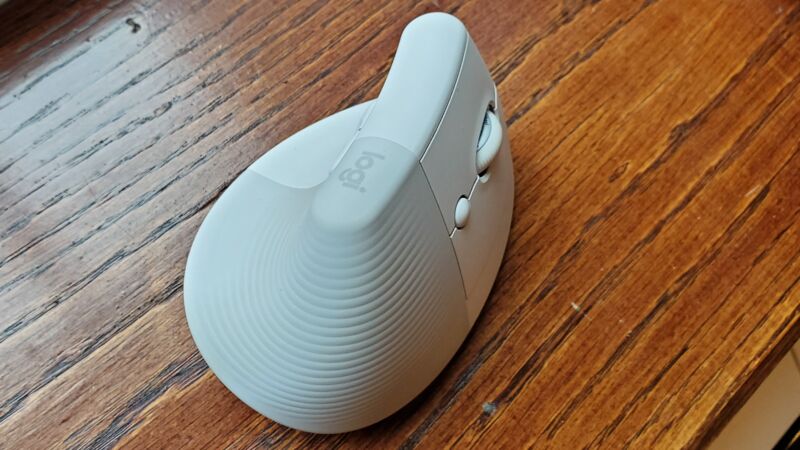
Scharon Harding
| Specs at a glance: Logitech Lift | |||
|---|---|---|---|
| Sensor | Optical (model not disclosed) | ||
| Connectivity options | Bluetooth Low Energy, 2.4 GHz wireless dongle | ||
| Programmable buttons | 4 | ||
| Onboard profiles | 0 | ||
| Lighting | None | ||
| Size | 4.25 x 2.76 x 2.8 inches (108 x 70 x 71 mm) | ||
| Weight | 0.28 lb (125 g) | ||
| Warranty | 1 year | ||
| Price (MSRP) | $70 | ||
With shockingly tall stature and non-traditional curves, vertical mice require some adjustment to use. But the purported payoff, if you’re to believe mouse-makers, is greater arm, wrist, and hand comfort due to a more natural hand position.
But like any ergonomic peripheral, you won’t reap any benefits if you don’t get used to the device. Logitech is one of the biggest names in vertical mice, thanks to the MX Vertical, one of the most feature-rich vertical mice on the market. The Logitech Lift wireless mouse isn’t as feature-rich, but it’s more inviting due to a smaller build targeting small to medium-sized hands, a left-handed option, and more colors.
These options make it easier to find a good fit, which is critical in ergonomics. And despite having a hand size appropriate for both the Lift and MX Vertical, I found the Lift easier to grasp while navigating its side buttons than any other vertical mice I’ve used.
Vertical design
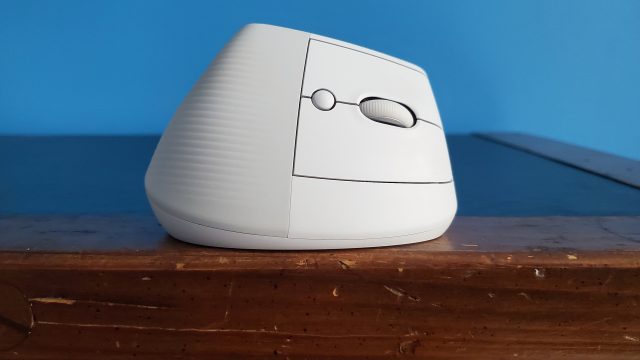
Scharon Harding
The Lift puts your hand at a 57-degree angle with the desk and in a handshake-like position. For comparison, the MX Vertical is at the same angle, and Logitech’s trackball mouse, the MX Ergo, is at a 20-degree angle. The angled designs result in less forearm pronation, keeping it and your hand more in line with the rest of your arm. Logitech made the Lift (4.25 x 2.76 x 2.8 inches, 0.28 lb) for hands up to 7.5 inches long, while the MX Vertical (4.72 x 3.11 x 3.09 inches, 0.3 lb) is for hands measuring at least 6.9 inches long.
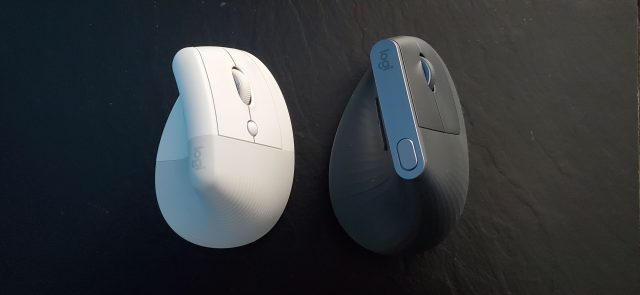
Scharon Harding
Ergonomics is all about comfort, so Logitech’s options for vertical mice include two sizes (and the lefty option) to benefit people’s needs. But is there any proof that a vertical mouse can alleviate pain?
A little research on vertical mice
There isn’t hard evidence proving that a vertical mouse can alleviate issues like carpal tunnel syndrome or repetitive strain injury (RSI). Logitech is also careful not to make any strong promises beyond stating the mouse “takes pressure off the wrist while promoting a more natural forearm posture throughout the day.” However, there is research confirming that vertical mice successfully fight forearm pronation.
One study, a 2015 paper, by researchers from Synaptics and the University of Washington’s School of Public Health, found that vertical mice strongly reduce pronation. It also found that “increasing mouse height and angling the mouse topcase can improve wrist posture without negatively affecting performance,” and that vertical mice can also lead to less neck and shoulder discomfort.
For carpal tunnel, the study found that while there was less ulnar deviation with vertical mice, there wasn’t a strong decrease in carpal tunnel pressure.
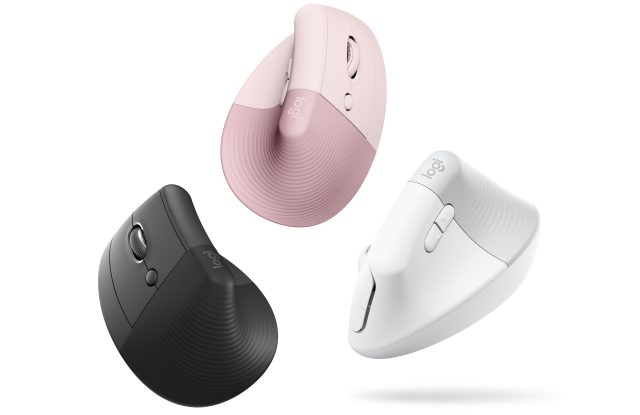
Logitech
Ergonomics experts, including the US Department of Labor’s Occupational Safety and Health Administration (OSHA), emphasize keeping your wrists and hands in line with your forearms when working with a computer. Although, it doesn’t make a statement on arm pronation.
Germany’s AGR, which certified the MX Vertical and MX Ergo, says a non-ergonomic mouse or keyboard can, based on a Google Translation, “place an undue burden on the spinal column (particularly the cervical spine), the muscles and joints (primarily shoulder and hand). These massive strains, possibly also in combination with stress, can make the user ill in the long term.”
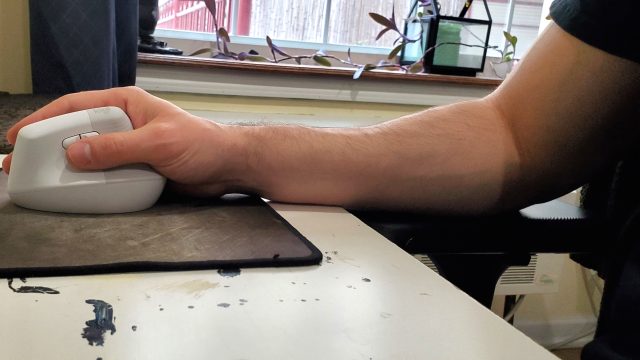
Scharon Harding
So even though there isn’t proof a vertical mouse will cure or prevent medical issues like carpal tunnel, they reduce pronation and should also help your arm maintain a truer 90-degree angle. If you have aches stemming from either of these areas, a vertical mouse could be helpful.
That is, if you use it comfortably.



